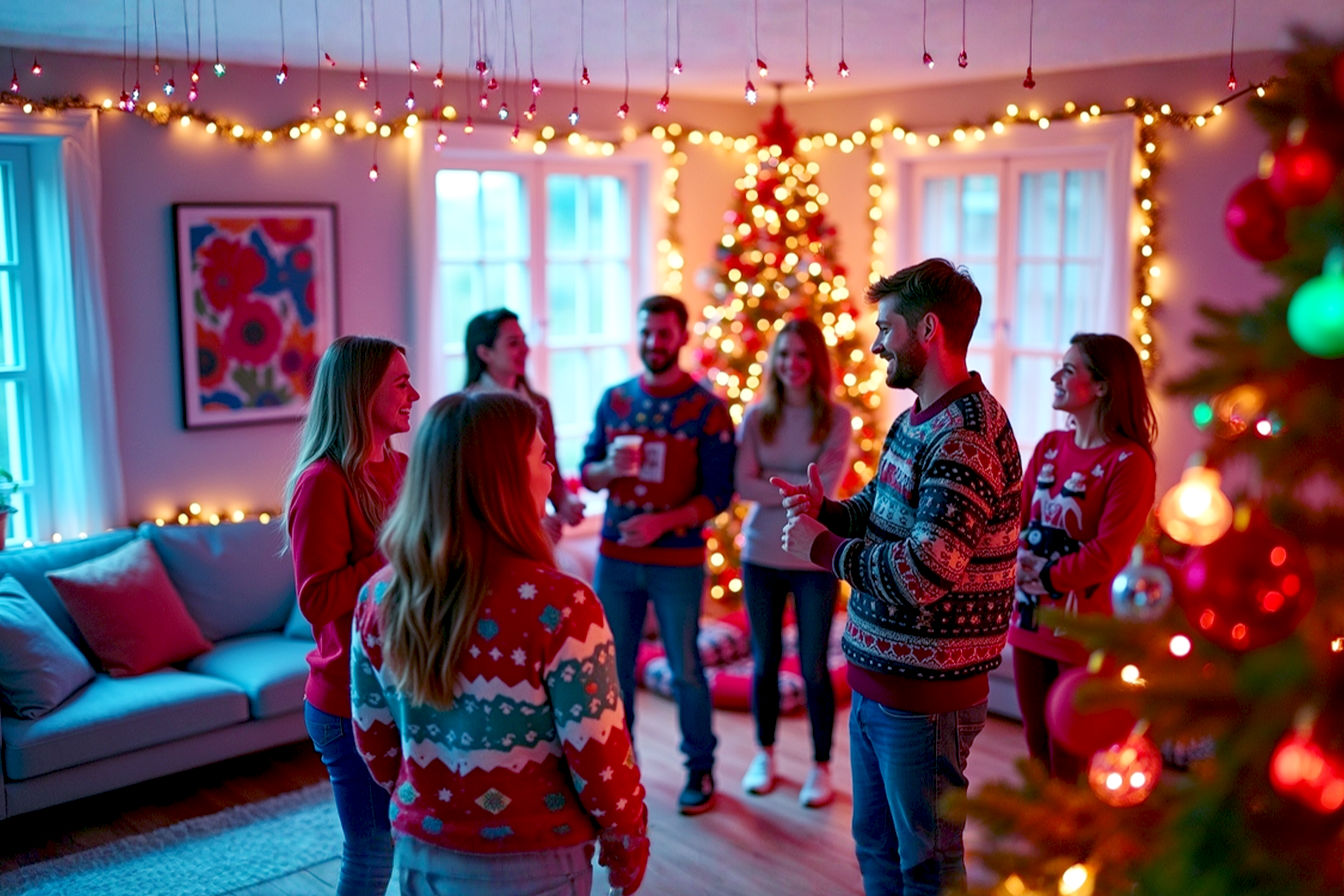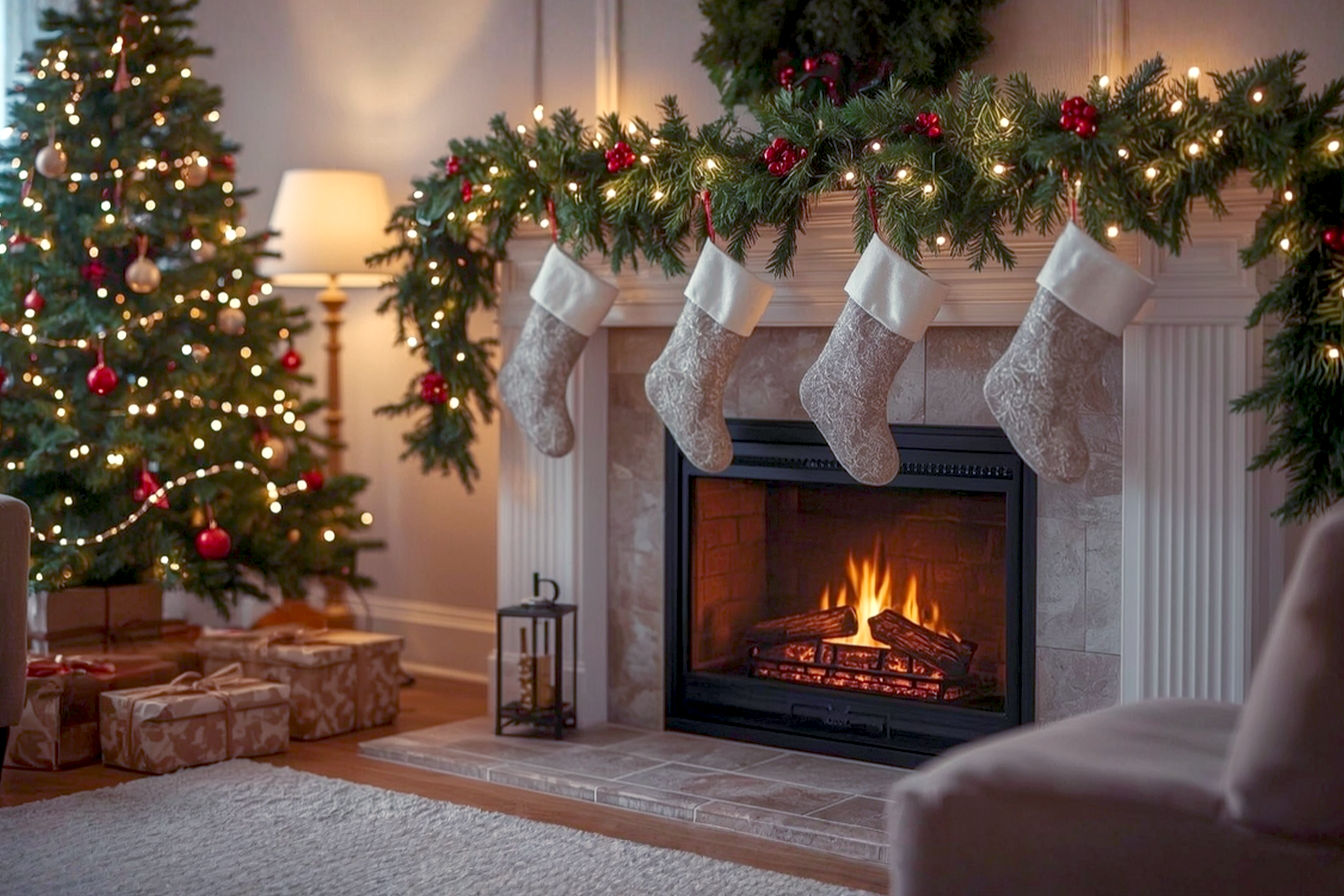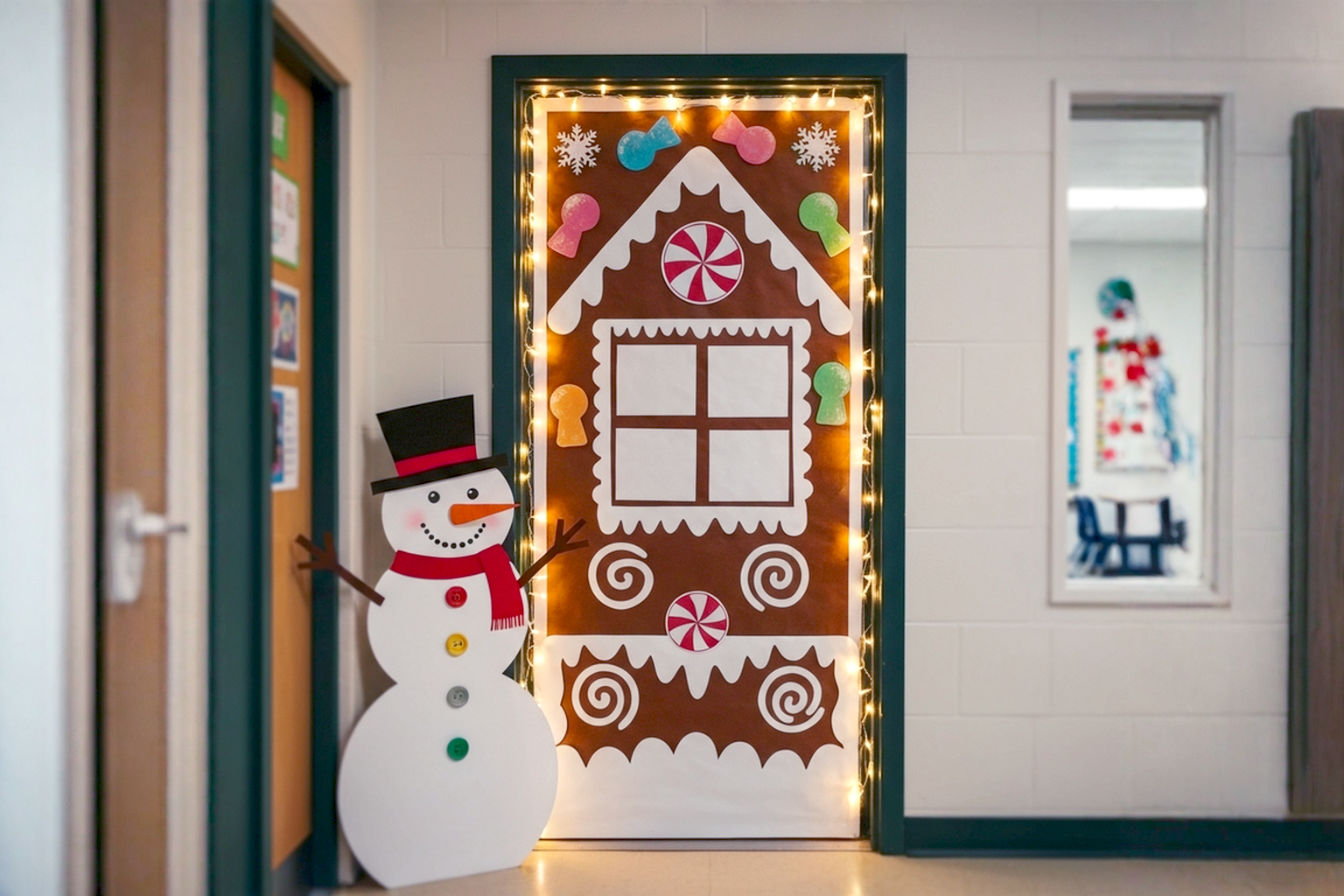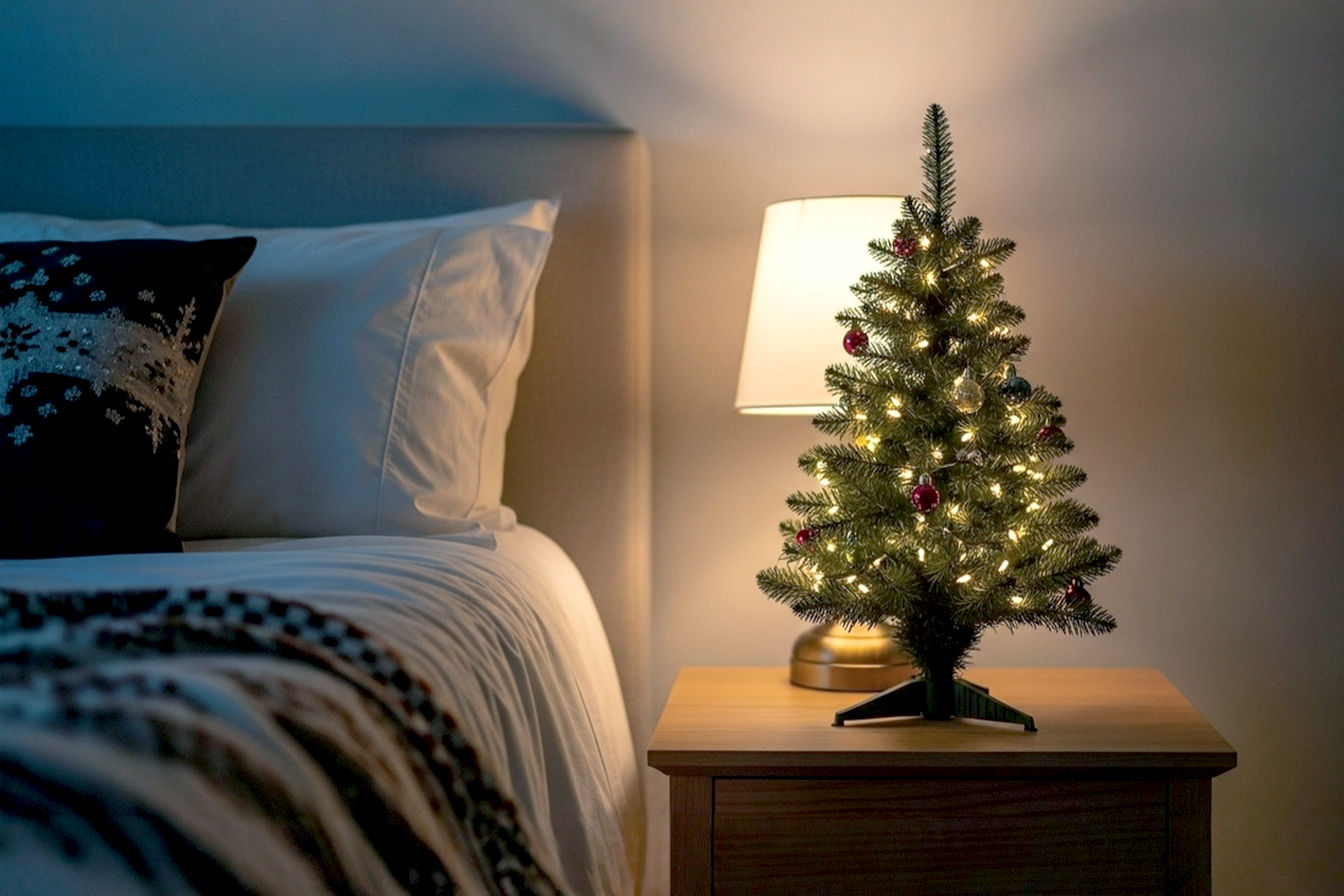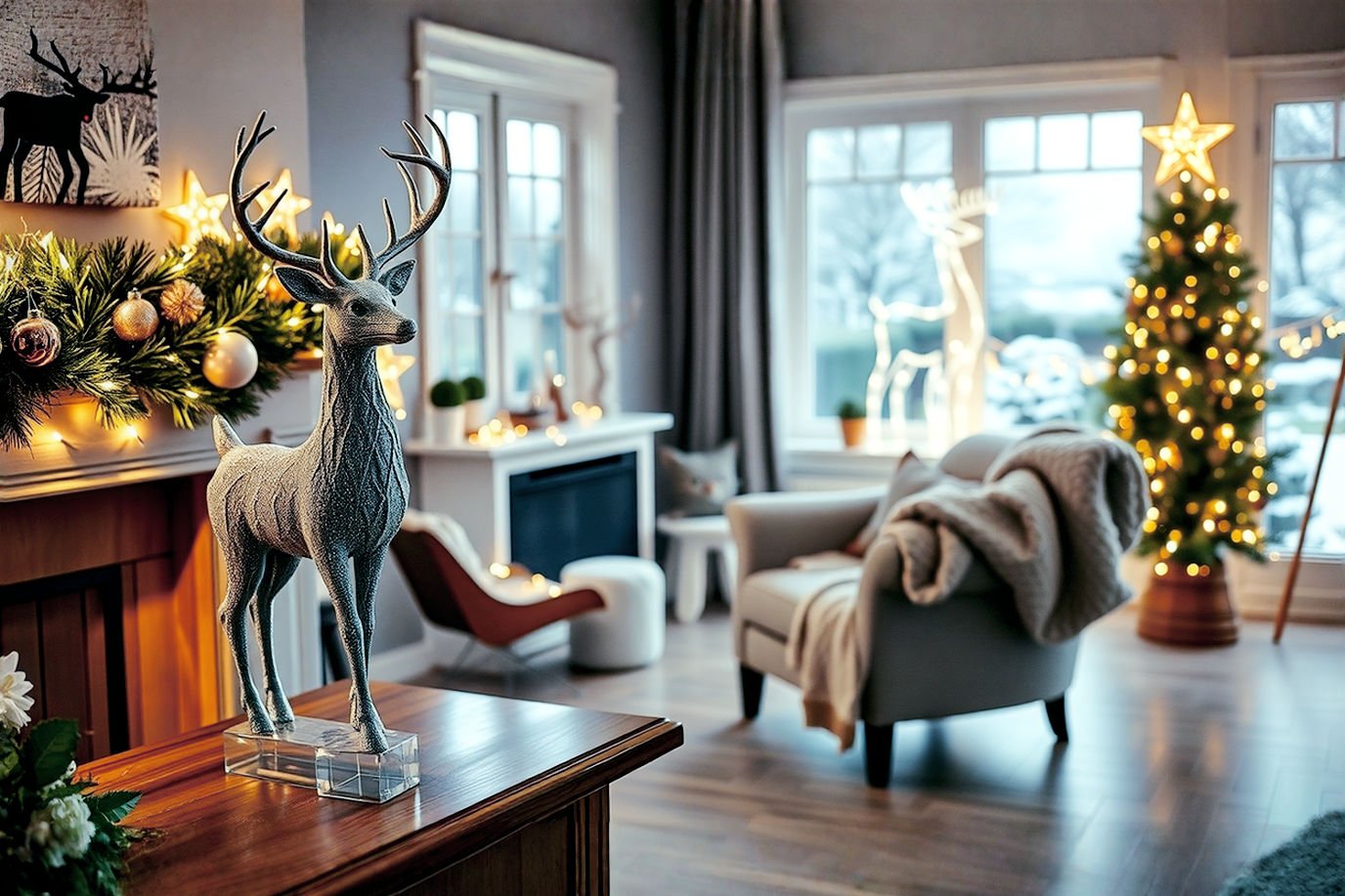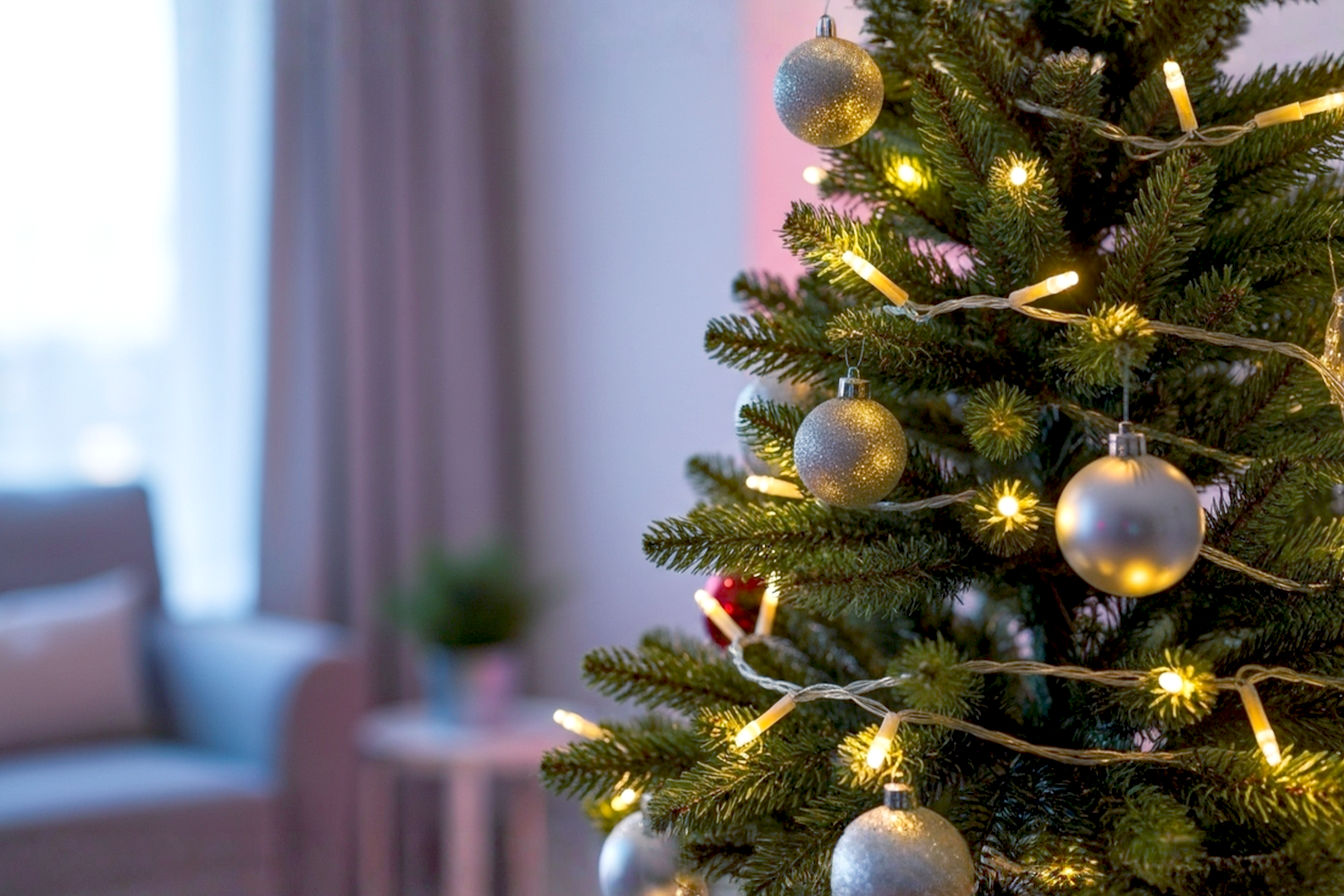This post may contain affiliate links. If you make a purchase through these links, we may earn a commission at no additional cost to you.
Introduction: Embracing Winter’s Glow with Snowflake Lights
As the days grow shorter and a crisp chill fills the air, our thoughts often turn to the warmth and wonder of the winter season. For many, this time of year is synonymous with dazzling light displays that bring cheer and a touch of magic to our homes. While traditional string lights and festive figures are popular, outdoor snowflake lights offer a uniquely elegant and captivating way to transform your yard into a truly enchanting scene. These delicate, illuminated forms evoke the serene beauty of a fresh snowfall, creating a peaceful yet spectacular ambiance.
This comprehensive guide will walk you through everything you need to know about these beautiful decorations. We’ll explore the various types of snowflake lights available, from energy-efficient LEDs to dynamic projectors, helping you find the perfect sparkle for your space. We’ll also cover essential planning and installation tips, emphasizing safety and design principles to help you craft a cohesive and breathtaking display. Finally, we’ll delve into maintenance and storage, ensuring your magical yard decor shines brightly for many seasons to come. Get ready to turn your outdoor area into a winter wonderland that will delight everyone who sees it.
The Enchantment of Outdoor Snowflake Lights
Snowflakes are nature’s fleeting masterpieces, each one unique and perfectly formed. Bringing this natural artistry to your home through illuminated designs creates an atmosphere that’s both sophisticated and whimsical. Snowflake lights outdoor aren’t just for Christmas; they offer a versatile aesthetic that extends beyond the traditional holiday season, making them perfect for general winter decor. Imagine your garden bathed in a soft, ethereal glow, with intricate snowflake patterns dancing across your lawn or hanging gracefully from tree branches.
These lights do more than just illuminate; they evoke a sense of calm, beauty, and wonder. The intricate designs and often subtle twinkling effects can transport viewers to a serene winter wonderland lights display, fostering a feeling of peace and joy. Whether you choose classic white lights for a frosty look or vibrant colors for a playful touch, the visual impact is undeniable. They create a focal point that draws the eye and invites admiration, making your home stand out in the neighborhood. It’s about crafting an experience, a visual narrative that celebrates the unique charm of winter.
Types of Outdoor Snowflake Lights: Finding Your Perfect Sparkle
When it comes to selecting outdoor snowflake lights, you’ll find a surprising variety of options. Each type offers distinct advantages in terms of appearance, energy consumption, and installation flexibility. Understanding these differences will help you choose the best lights for your specific vision and needs.
LED Snowflake Lights: The Bright Future of Illumination
Light Emitting Diodes, or LEDs, have revolutionized the lighting industry, and LED snowflake lights are a prime example of their benefits. They’ve become the gold standard for outdoor holiday and winter lighting, and for good reason.
Energy Efficiency: How LEDs Save You Money
One of the most compelling reasons to choose LEDs is their incredible energy efficiency outdoor lights. Unlike traditional incandescent bulbs, which generate a lot of heat as a byproduct, LEDs convert most of their electrical energy directly into light. This means they consume significantly less power to produce the same amount of brightness. For example, a typical LED light might use only 0.5 to 1 watt of power, while an incandescent bulb producing similar light output could consume 5 to 7 watts. This difference really adds up, especially when you have a large display running for many hours each night. You’ll see the savings on your electricity bill.
Longevity: Lights That Last
LEDs also boast an impressive lifespan, far exceeding that of incandescent bulbs. While a traditional bulb might last around 2,000 hours, many high-quality LEDs are rated for 25,000 to 50,000 hours of operation. This means you won’t be constantly replacing burnt-out bulbs, saving you time and money over several seasons. Their extended life makes them a smart long-term investment for your outdoor decor.
Durability and Cool Operation: Built for the Outdoors
Because LEDs don’t have fragile filaments or glass bulbs that can shatter, they are inherently more durable and resistant to breakage. This is a huge advantage for outdoor use, where lights are exposed to wind, rain, and potential impacts. Furthermore, LEDs operate at a much cooler temperature than incandescent bulbs. This minimal heat emission makes them safer to touch and reduces the risk of fire hazards, especially when placed near flammable materials like dry leaves or fabric decorations.
Color Options: Setting the Mood
LED technology allows for a wide array of color options, giving you flexibility in designing your display. You can find:
- Warm White: A soft, yellowish glow that mimics traditional incandescent bulbs, creating a cozy and inviting atmosphere.
- Cool White: A brighter, bluish-white light that evokes a crisp, icy, and modern feel, perfect for a true winter wonderland effect.
- Multi-Color: Vibrant reds, greens, blues, and yellows for a festive and playful look.
- Color-Changing (RGB): Advanced LED sets can cycle through various colors or be programmed to display specific hues, often controlled by a remote or smart app, offering dynamic effects.
Traditional Incandescent Snowflake Lights: A Classic Warmth
While less common for new purchases due to their higher energy consumption and shorter lifespan, traditional incandescent snowflake lights still offer a classic, warm, and familiar glow that some people prefer. They tend to have a very specific, soft yellow light that can evoke a nostalgic feeling. However, their drawbacks, particularly their energy demands and fragility, often lead homeowners to choose LEDs for modern outdoor displays.
Power Sources: How to Keep Them Shining
The way your snowflake lights get their power is a crucial consideration for placement and convenience.
Plug-In (AC Powered): Standard and Reliable
Most outdoor snowflake lights are designed to be plug-in, meaning they connect directly to a standard electrical outlet. This provides a reliable and consistent power supply, ensuring your lights shine brightly all night long. However, it does require access to outdoor-rated electrical outlets. It’s absolutely critical to use Ground Fault Circuit Interrupter (GFCI) outlets for all outdoor lighting. A GFCI outlet is a special type of circuit breaker that quickly shuts off electrical power if it detects a ground fault, which is an unintended path for electricity to flow to the ground. This rapid shut-off helps prevent electric shock, especially in wet outdoor conditions. Always use outdoor-rated extension cords that are specifically designed to withstand moisture and temperature fluctuations. Overloading circuits should also be avoided to prevent fire hazards.
Battery-Operated Snowflake Lights: Flexibility Without Wires
For areas where electrical outlets are scarce or inconvenient, battery-operated snowflake lights offer excellent flexibility. These sets come with a small battery pack that powers the lights, allowing you to place them almost anywhere—on fences, in trees, or around planters—without needing a nearby power source. Common battery types include AA, C, or D cells. The duration these lights will shine depends on the battery type, the number of lights, and the quality of the batteries. For instance, a set using three AA batteries might last for 6-8 hours on a single charge, while larger D-cell batteries could power lights for several days of continuous use. When choosing battery-operated lights, ensure the battery pack itself is weather-resistant, often with a sealed casing to protect against moisture.
Solar Snowflake Lights: Harnessing the Sun’s Energy
Solar snowflake lights are an increasingly popular and eco-friendly option. These lights incorporate a small solar panel that captures sunlight during the day and converts it into electrical energy. This energy is then stored in a rechargeable battery (typically NiMH or Li-ion) within the unit. As dusk falls, a light sensor automatically turns the lights on, drawing power from the stored energy.
The solar panel itself contains photovoltaic cells, which are semiconductor devices that convert light directly into electricity. There are generally two types of solar panels used in these lights:
- Amorphous Silicon Panels: These are less efficient but can generate power even in low light conditions or on cloudy days. They are often larger and darker.
- Monocrystalline Silicon Panels: More efficient, meaning they can generate more power from a smaller area, but they perform best in direct sunlight.
For optimal charging, the solar panel needs to be placed in a location that receives at least 6-8 hours of direct sunlight daily. Shady spots will result in shorter illumination times. While solar lights offer unparalleled convenience and zero electricity costs, their brightness and duration can be dependent on weather conditions and the amount of sunlight received.
Design and Structure: From Subtle Accents to Grand Statements
Beyond the light source, snowflake lights come in various physical designs, allowing for diverse display possibilities.
Hanging Snowflake Lights: Graceful Suspensions
These are perhaps the most iconic type, designed to be suspended from eaves, pergolas, porch ceilings, or tree branches. They often feature a sturdy frame, usually made of metal or acrylic, shaped into an intricate snowflake design, with LEDs embedded along the frame. They come in a wide range of sizes, from small, delicate 12-inch designs to impressive large outdoor snowflake lights that can span several feet, creating a dramatic focal point. Acrylic designs often offer a crystal-like appearance, even when unlit, while metal frames provide a more robust structure.
Stake-Mounted Snowflake Lights: Pathway Illumination
For pathways, garden beds, or lining driveways, stake-mounted snowflake lights are ideal. These units typically have a smaller snowflake design attached to a ground stake, allowing them to be easily pushed into soft earth. They provide low-level illumination, guiding visitors and adding a charming accent to your landscape.
Projector Snowflake Lights: Dynamic Light Shows
Snowflake projector lights offer a unique way to cover large surfaces with dynamic, moving snowflake patterns. Instead of individual light fixtures, a single projector unit shines a light pattern onto a wall, garage door, or even dense foliage. These projectors often use either DLP (Digital Light Processing) or LCD (Liquid Crystal Display) projection technology to create the images. DLP projectors use microscopic mirrors to reflect light, while LCD projectors use liquid crystals to control light pass-through. The wattage of the projector and the quality of its optics determine the brightness and clarity of the projection, as well as the effective projection distance. A typical residential projector might have a wattage of 5-15 watts and can project clear images up to 20-30 feet away, though professional models can go much further. They are incredibly easy to set up and can create a mesmerizing effect, making them a popular choice for quick and impactful displays. However, they rely on a flat, unobstructed surface for the best results.
Net Lights and String Lights with Snowflake Motifs: Covering Large Areas
For covering bushes, hedges, or even the entire side of a house, you can find net lights or traditional string lights that incorporate snowflake motifs. Net lights are pre-strung in a grid pattern, making them incredibly easy to drape over shrubs for uniform coverage. String lights with snowflake attachments offer a more customizable approach, allowing you to wrap them around trees or railings.
Planning Your Magical Display: Design and Layout
Creating a truly magical outdoor scene with snowflake lights goes beyond simply hanging them up. Thoughtful planning and design are key to achieving a cohesive and breathtaking holiday light display.
Assessing Your Space: Where to Shine
Start by taking a good look at your yard and home. Identify key areas that could benefit from illumination:
- House Facade: Eaves, windows, garage doors, and porch railings are classic spots for hanging lights.
- Trees and Bushes: These provide natural structures for wrapping or draping lights.
- Pathways and Driveways: Stake lights or small hanging snowflakes can define these areas.
- Architectural Features: Columns, arches, or unique landscaping elements can be highlighted.
Consider the scale of your display. Do you want a subtle, elegant look, or a grand, eye-catching spectacle? This will influence the number and size of lights you choose.
Theme and Cohesion: A Unified Look
Decide on a unified theme for your display. While snowflakes are the central motif, you can choose a color scheme that ties everything together:
- Icy Blue and Cool White: Creates a frosty, ethereal winter wonderland.
- Warm White Glow: Offers a cozy, inviting, and traditional feel.
- Multi-Color Festive: A playful and vibrant look, great for families.
Mixing too many different color temperatures or styles can make a display look chaotic. Sticking to a consistent palette enhances the overall aesthetic.
Layering Lights for Depth: A Richer Effect
The most impressive light displays often use layering to create depth and visual interest. Don’t just rely on one type of light. Combine different forms of snowflake lights and complementary lighting for a richer effect. For instance, you could use large outdoor snowflake lights hanging from your eaves as a primary focal point, then drape smaller string snowflakes with a similar color temperature over your bushes. Add stake-mounted snowflakes along your pathway to guide visitors and complete the scene. This layering adds dimension and makes the display more immersive.
Focal Points: Highlighting Special Features
Identify specific features you want to highlight. A particularly beautiful tree, a prominent archway, or even your front door can become a focal point. Use larger, more elaborate snowflake lights or a projector to draw attention to these areas. This helps to anchor your design and gives the eye a place to rest.
Considering Neighbors: Enjoyment, Not Disruption
While you want your display to be impressive, it’s also important to be considerate of your neighbors. Avoid excessively bright or rapidly flashing lights that could be disruptive. Direct projectors away from neighboring windows. A beautiful display enhances the whole community, but an inconsiderate one can cause friction.
Installation Guide: Bringing Your Vision to Life
Once you’ve planned your magical display, the next step is bringing it to life through careful installation. This phase requires attention to detail, especially regarding safety.
Safety First: Essential Precautions
When working with electricity outdoors, safety is paramount. Don’t skip these crucial steps.
Electrical Safety: Protecting Against Hazards
As mentioned earlier, Ground Fault Circuit Interrupter (GFCI) outlets are non-negotiable for outdoor lighting. If you don’t have them, consider having them installed by a qualified electrician or use portable GFCI adapters. These devices are designed to detect even small imbalances in electrical current, which can indicate a ground fault, and quickly cut off power to prevent severe electric shock. Always use extension cords that are specifically rated for outdoor use, indicated by a “W” on the cord (e.g., SJTW). These cords have thicker insulation and are designed to withstand moisture and temperature extremes. Never overload electrical circuits; check the wattage of your lights and the capacity of your circuit breaker. If you’re unsure, consult an electrician.
Ladder Safety: Reaching New Heights Safely
Many outdoor light installations require working at heights. Always use a sturdy ladder and follow proper ladder safety guidelines:
- Place the ladder on a firm, level surface.
- Ensure the ladder is fully extended and locked into place.
- Maintain three points of contact (two hands and one foot, or one hand and two feet) with the ladder at all times.
- Never overreach; if you can’t comfortably reach an area, move the ladder.
- Have someone spot you if possible, especially on taller ladders.
Weather Considerations: Installing on Dry Days
Always install your lights on a dry day. Working with electricity in wet conditions significantly increases the risk of shock. Ensure all connections are secure and, if possible, use waterproof snowflake lights that have appropriate IP ratings (Ingress Protection) for outdoor exposure. Even if lights are rated waterproof, try to keep connections as dry as possible, perhaps by wrapping them with electrical tape or using weatherproof connection boxes.
Tools and Materials You’ll Need: Prepared for Success
Having the right tools on hand will make your installation much smoother:
- Ladder: For reaching high places.
- Measuring Tape: For planning spacing and cord lengths.
- Zip Ties: Versatile for securing lights to railings, branches, or frames.
- Outdoor Clips: Specific clips for shingles, gutters, or siding.
- Outdoor-Rated Extension Cords: As discussed, essential for safety.
- Light Timers: To automate your display.
- Surge Protectors: To protect your lights from power fluctuations (ensure they are outdoor-rated).
- Gloves: For comfort and protection.
- Wire Cutters/Strippers: If you need to modify wiring (though often not necessary for pre-made sets).
Pro Tip: Before you start hanging anything, unbox all your lights and test every single strand and snowflake. This simple step can save you hours of troubleshooting later if a section isn’t working.
Step-by-Step Installation: Bringing Your Vision to Life
With safety in mind and your tools ready, it’s time to install your outdoor Christmas snowflake lights.
Mapping it Out: From Plan to Reality
Refer back to your design plan. Use your measuring tape to determine the exact placement of each snowflake and the length of extension cords needed. This prevents guesswork and ensures a clean, organized look. Mark where each power source will be and how the cords will run.
Securing Lights: Firm and Safe Attachments
Use the appropriate fasteners for different surfaces:
- For Rooflines and Gutters: Shingle clips or gutter clips are designed to securely hold light strands without damaging your roof.
- For Trees and Bushes: Zip ties are excellent for attaching snowflake lights to branches. Ensure they are snug but not so tight that they damage the branch as it grows.
- For Railings and Fences: Zip ties or outdoor-rated light clips work well.
- For Ground Placement: Stake-mounted lights simply push into the soil. For projector lights, ensure the projector is on a stable, level surface and pointed correctly.
Managing Cords: A Clean and Safe Look
Loose, tangled wires are not only unsightly but also a tripping hazard. Take the time to hide wires as much as possible. Run them along the contours of your house, behind bushes, or buried shallowly (using appropriate conduit for protection) where necessary. Use zip ties or electrical tape to bundle excess cord length. This creates a much cleaner, more professional look for your display.
Timers and Smart Controls: Automating Your Display
To make your life easier and save energy, incorporate timers or smart controls.
- Mechanical Timers: Simple, dial-based timers that allow you to set specific on/off times. They are reliable and easy to use.
- Digital Timers: Offer more precise programming, often with multiple on/off cycles and even dusk-to-dawn sensors.
- Smart Plugs: These Wi-Fi or Bluetooth-enabled devices plug into your outdoor outlet, and your lights plug into them. You can then control your lights from your smartphone app, setting schedules, turning them on/off remotely, or even integrating them with voice assistants like Alexa or Google Assistant. This offers the ultimate convenience and allows for dynamic control over your display.
Enhancing the Magic: Beyond Snowflake Lights
While snowflake lights are the stars of your winter display, combining them with other elements can elevate the magic and create a truly immersive scene.
Complementary Lighting: Adding Layers of Glow
Think of your snowflake lights as the primary layer, and then add supporting layers of light to enhance the overall effect:
- Icicle Lights: These cascading lights pair perfectly with snowflakes, creating the illusion of glistening ice formations. Hanging them from eaves alongside your snowflakes can create a cohesive and beautiful winter theme.
- String Lights: Classic string lights, whether mini lights or C7/C9 bulbs, are versatile. Wrap them around tree trunks, drape them through bushes, or outline architectural features to add ambient glow and fill in empty spaces.
- Spotlights: Use outdoor spotlights to highlight specific architectural features of your home, a particularly beautiful tree, or even a large snowflake decoration. A well-placed spotlight can add dramatic flair and depth to your display.
Non-Lighting Decor Elements: Adding Texture and Form
Don’t forget that non-lighting elements can also contribute significantly to your outdoor winter lights display:
- Inflatable Figures: Large inflatable snowmen, reindeer, or other winter characters can add a playful and whimsical touch, especially for families with children.
- Garlands, Wreaths, and Bows: Adorn your doorways, railings, and lampposts with evergreen garlands, festive wreaths, and large bows. These traditional elements provide texture and color, complementing the sparkle of the lights.
- Faux Snow: For a truly immersive winter wonderland, consider adding faux snow blankets or flakes around the base of trees or along pathways. This creates a soft, snowy ground cover that enhances the illuminated snowflakes above.
Soundscapes: A Full Sensory Experience
If appropriate for your neighborhood and not disruptive, consider adding a subtle soundscape. Soft, instrumental winter-themed music or the gentle sound of sleigh bells can further enhance the magical atmosphere. Ensure the volume is low and respectful of your neighbors. This creates a multi-sensory experience that truly transports visitors into your winter masterpiece.
Maintenance and Storage: Keeping Your Sparkle Alive
To ensure your yard snowflake lights continue to shine brightly season after season, proper maintenance and end-of-season storage are essential. A little effort now can save you time, money, and frustration later.
Regular Checks: Throughout the Season
Even after installation, it’s a good idea to perform regular checks on your light display, especially after strong winds or heavy precipitation.
- Inspect Lights and Connections: Look for any loose connections, frayed wires, or damaged bulbs (though less common with durable LEDs).
- Check for Obstructions: Ensure no branches or debris are resting on the lights, which could cause damage or pose a fire risk.
- Verify Timers: Confirm that your timers are functioning correctly and your lights are turning on and off as scheduled.
Cleaning: Keeping Them Bright
If your lights get dirty from dust, pollen, or environmental debris, a gentle cleaning can restore their sparkle.
- Unplug First: Always unplug the lights from their power source before cleaning.
- Gentle Wipe: Use a soft, damp cloth to gently wipe down the snowflake forms and wires. Avoid harsh chemicals or abrasive cleaners, which could damage the materials or coatings.
- Air Dry: Allow the lights to air dry completely before plugging them back in.
Troubleshooting Common Issues: Quick Fixes
Even the most durable outdoor lights can encounter minor issues. Here are some common problems and their solutions:
- Flickering Lights: This often indicates a loose connection. Check all plugs, extension cord connections, and individual bulb connections (if applicable). For LED sets, a faulty individual LED is rare but can sometimes cause a section to flicker; usually, the entire strand or section will go out if there’s a major issue.
- Partial Outages: If only a section of your lights is out, it could be a blown fuse (in some older incandescent sets, check the fuse in the plug), a cut wire, or a loose connection within that specific section. Carefully inspect the affected area.
- Projector Issues: If your snowflake projector isn’t displaying correctly, check for obstructions in front of the lens. Ensure it’s properly focused (most have a manual focus ring) and that it’s within the recommended projection distance from the surface. Sometimes, simply repositioning the projector can resolve the issue.
End-of-Season Storage: Preserving Your Investment
Proper storage is crucial for extending the life of your lights and making next season’s setup much easier.
- Cleaning and Drying: Before packing away, ensure all lights are clean and completely dry. Any moisture stored with the lights can lead to mildew, corrosion, or damage.
- Organized Storage: Tangled lights are a nightmare. Invest in light reels, specialized storage bags, or even use the original packaging. Wrap string lights around cardboard or plastic reels to prevent knots. Store individual snowflake forms carefully to prevent bending or breakage. Label your bins or boxes clearly (e.g., “Snowflake Lights – Eaves,” “Pathway Lights”).
- Environmental Control: Store your lights in a cool, dry place. Basements, attics, or garages are common, but ensure they are not prone to extreme temperature fluctuations or excessive humidity, which can degrade wires and components. Keep them away from pests that might chew on wires.
Choosing the Best Outdoor Snowflake Lights: What to Look For
Selecting the best outdoor snowflake lights involves considering several key factors to ensure you get a product that meets your needs for aesthetics, durability, and functionality.
Durability and Weather Resistance: Built for the Elements
Since these lights will be exposed to the elements, their durability and weather resistance are paramount. Look for an IP (Ingress Protection) rating. This two-digit code indicates how well a product is protected against solids (like dust) and liquids (like water).
- The first digit refers to solid particle protection (0-6). For outdoor lights, you’ll want at least a 4 (protected against solid objects over 1mm) or 5 (dust protected), ideally 6 (dust tight).
- The second digit refers to liquid ingress protection (0-8). For outdoor use, an IP rating of IP44 (protected against splashing water from any direction) is a minimum for general outdoor use. IP65 (protected against low-pressure water jets from any direction) or higher is even better, especially for areas exposed to heavy rain or snow. This ensures your waterproof snowflake lights will withstand winter conditions.
Brightness and Color Temperature: Setting the Scene
- Brightness (Lumens): While not always listed for decorative lights, brightness is important. If you want a subtle glow, a lower lumen output is fine. For a dazzling, highly visible display, look for brighter options.
- Color Temperature (Kelvin): For white lights, color temperature is measured in Kelvin (K).
- Warm White: Typically ranges from 2700K to 3000K, producing a soft, yellowish light similar to traditional incandescent bulbs. This creates a cozy, inviting, and nostalgic feel.
- Cool White: Usually falls between 5000K and 6500K, emitting a brighter, bluish-white light. This evokes a crisp, icy, and modern aesthetic, perfect for a true winter wonderland. Choose the color temperature that best aligns with your desired mood and existing decor.
Size and Scale: Matching Your Space
Consider the physical size of the snowflake lights. A small 12-inch snowflake might look lost on a large garage door but perfect on a porch railing. Conversely, a massive 4-foot snowflake might overwhelm a small window. Match the size and scale of the lights to the area you intend to decorate. This is crucial for creating a balanced and visually appealing display.
Features: Convenience and Control
Modern snowflake light features often include:
- Timers: Built-in timers allow you to set the lights to turn on and off automatically, saving energy and hassle.
- Dimmers: Adjustable brightness levels can help you fine-tune the ambiance.
- Remote Controls: Conveniently change settings from a distance.
- Animation Modes: Some lights offer various twinkling, chasing, or fading effects, adding dynamic movement to your display.
Ease of Installation: Simple Setup
Look for lights with simple connectors and clear instructions. Pre-assembled units or those with included mounting hardware (like clips or stakes) can significantly reduce installation time and effort.
Brand Reputation and Warranty: Quality Assurance
Choose reputable brands known for producing quality outdoor lighting. Check for product reviews and look for lights that come with a warranty. A good warranty indicates the manufacturer stands behind their product and offers peace of mind. By considering these factors, you can select the types of snowflake lights that will truly transform your yard.
Conclusion: Your Yard, A Winter Masterpiece
Transforming your yard into a magical winter scene with outdoor snowflake lights is an incredibly rewarding endeavor. We’ve explored the diverse types of lights available, from the energy-saving brilliance of LEDs and the flexibility of solar power to the dynamic patterns of projectors. We’ve also delved into the art of planning your display, emphasizing the importance of design, layering, and creating focal points to achieve a cohesive and captivating look. Most importantly, we’ve highlighted the critical safety precautions and practical installation steps that ensure your display is not only beautiful but also secure.
By understanding the technical aspects like IP ratings and Kelvin temperatures, you can make informed choices, selecting the best outdoor snowflake lights that are both durable and aesthetically perfect for your vision. Remember that proper maintenance and organized storage will extend the life of your decorations, allowing you to enjoy their sparkle for many seasons to come.
Embrace your creativity, prioritize safety, and let the intricate beauty of illuminated snowflakes turn your outdoor space into a breathtaking winter wonderland. Your yard snowflake lights won’t just illuminate the night; they’ll create cherished memories and bring joy to everyone who experiences your spectacular, transformed yard.

